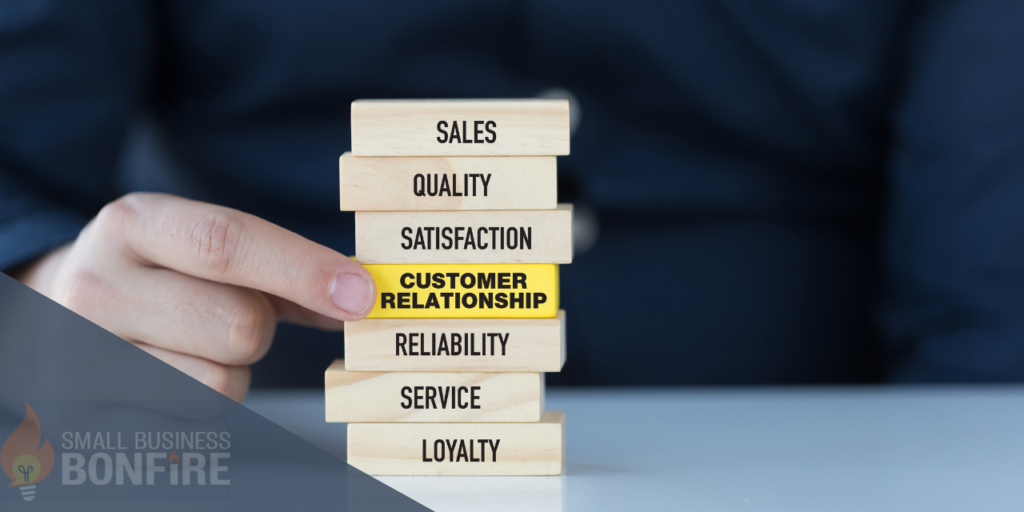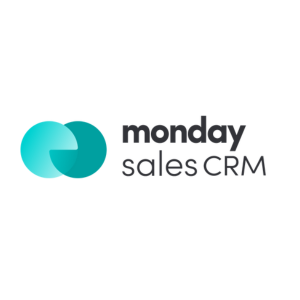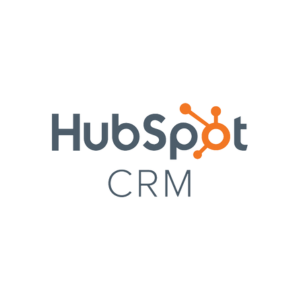.elementor-widget-image{text-align:center}.elementor-widget-image a{display:inline-block}.elementor-widget-image a img[src$=”.svg”]{width:48px}.elementor-widget-image img{vertical-align:middle;display:inline-block}

.elementor-widget-text-editor.elementor-drop-cap-view-stacked .elementor-drop-cap{background-color:#69727d;color:#fff}.elementor-widget-text-editor.elementor-drop-cap-view-framed .elementor-drop-cap{color:#69727d;border:3px solid;background-color:transparent}.elementor-widget-text-editor:not(.elementor-drop-cap-view-default) .elementor-drop-cap{margin-top:8px}.elementor-widget-text-editor:not(.elementor-drop-cap-view-default) .elementor-drop-cap-letter{width:1em;height:1em}.elementor-widget-text-editor .elementor-drop-cap{float:left;text-align:center;line-height:1;font-size:50px}.elementor-widget-text-editor .elementor-drop-cap-letter{display:inline-block}
Are you looking for a way to better manage your customer relationships and drive growth for your small to medium-sized business (SMB)? That’s where customer relationship management comes in!
However, choosing the wrong strategy can not only waste your time, effort, and money but can also damage your relationships with customers, affecting your business’s bottom line.
My name is AJ, and I have spent the past decade building and growing my own digital agency! After a successful exit, I started Small Business Bonfire to assist other entrepreneurs and small business owners in creating success for their ventures.
Throughout my career, I have used many different CRMs and ECRMs, all helping me manage client relationships.
But what is the difference between the two?
Let’s delve into the world of customer relationship management!
Key Takeaways
-
ECRM is geared more toward an e-business -
Both systems collect and analyze customer-related intelligence -
CRM systems are designed for a more traditional business model -
ECRM and CRM software offers critical success factors for businesses
SBB Featured Partners
.elementor-widget-divider{–divider-border-style:none;–divider-border-width:1px;–divider-color:#0c0d0e;–divider-icon-size:20px;–divider-element-spacing:10px;–divider-pattern-height:24px;–divider-pattern-size:20px;–divider-pattern-url:none;–divider-pattern-repeat:repeat-x}.elementor-widget-divider .elementor-divider{display:flex}.elementor-widget-divider .elementor-divider__text{font-size:15px;line-height:1;max-width:95%}.elementor-widget-divider .elementor-divider__element{margin:0 var(–divider-element-spacing);flex-shrink:0}.elementor-widget-divider .elementor-icon{font-size:var(–divider-icon-size)}.elementor-widget-divider .elementor-divider-separator{display:flex;margin:0;direction:ltr}.elementor-widget-divider–view-line_icon .elementor-divider-separator,.elementor-widget-divider–view-line_text .elementor-divider-separator{align-items:center}.elementor-widget-divider–view-line_icon .elementor-divider-separator:after,.elementor-widget-divider–view-line_icon .elementor-divider-separator:before,.elementor-widget-divider–view-line_text .elementor-divider-separator:after,.elementor-widget-divider–view-line_text .elementor-divider-separator:before{display:block;content:””;border-bottom:0;flex-grow:1;border-top:var(–divider-border-width) var(–divider-border-style) var(–divider-color)}.elementor-widget-divider–element-align-left .elementor-divider .elementor-divider-separator>.elementor-divider__svg:first-of-type{flex-grow:0;flex-shrink:100}.elementor-widget-divider–element-align-left .elementor-divider-separator:before{content:none}.elementor-widget-divider–element-align-left .elementor-divider__element{margin-left:0}.elementor-widget-divider–element-align-right .elementor-divider .elementor-divider-separator>.elementor-divider__svg:last-of-type{flex-grow:0;flex-shrink:100}.elementor-widget-divider–element-align-right .elementor-divider-separator:after{content:none}.elementor-widget-divider–element-align-right .elementor-divider__element{margin-right:0}.elementor-widget-divider:not(.elementor-widget-divider–view-line_text):not(.elementor-widget-divider–view-line_icon) .elementor-divider-separator{border-top:var(–divider-border-width) var(–divider-border-style) var(–divider-color)}.elementor-widget-divider–separator-type-pattern{–divider-border-style:none}.elementor-widget-divider–separator-type-pattern.elementor-widget-divider–view-line .elementor-divider-separator,.elementor-widget-divider–separator-type-pattern:not(.elementor-widget-divider–view-line) .elementor-divider-separator:after,.elementor-widget-divider–separator-type-pattern:not(.elementor-widget-divider–view-line) .elementor-divider-separator:before,.elementor-widget-divider–separator-type-pattern:not([class*=elementor-widget-divider–view]) .elementor-divider-separator{width:100%;min-height:var(–divider-pattern-height);-webkit-mask-size:var(–divider-pattern-size) 100%;mask-size:var(–divider-pattern-size) 100%;-webkit-mask-repeat:var(–divider-pattern-repeat);mask-repeat:var(–divider-pattern-repeat);background-color:var(–divider-color);-webkit-mask-image:var(–divider-pattern-url);mask-image:var(–divider-pattern-url)}.elementor-widget-divider–no-spacing{–divider-pattern-size:auto}.elementor-widget-divider–bg-round{–divider-pattern-repeat:round}.rtl .elementor-widget-divider .elementor-divider__text{direction:rtl}.e-con-inner>.elementor-widget-divider,.e-con>.elementor-widget-divider{width:var(–container-widget-width,100%);–flex-grow:var(–container-widget-flex-grow)}
.elementor-heading-title{padding:0;margin:0;line-height:1}.elementor-widget-heading .elementor-heading-title[class*=elementor-size-]>a{color:inherit;font-size:inherit;line-height:inherit}.elementor-widget-heading .elementor-heading-title.elementor-size-small{font-size:15px}.elementor-widget-heading .elementor-heading-title.elementor-size-medium{font-size:19px}.elementor-widget-heading .elementor-heading-title.elementor-size-large{font-size:29px}.elementor-widget-heading .elementor-heading-title.elementor-size-xl{font-size:39px}.elementor-widget-heading .elementor-heading-title.elementor-size-xxl{font-size:59px}
What Is a CRM (Customer Relationship Management)?
A CRM (or customer relationship management) system helps businesses with managing relationships and interactions with their customers. It involves collecting, organizing, and analyzing customer data with information technology to improve the overall customer experience, ultimately building enduring customer loyalty and retention.
Benefits of a CRM
One of the most significant advantages of CRM is that it helps you manage every customer interaction effectively and efficiently. With a CRM system, you can organize consumer data in one place, making accessing and analyzing customer information easier. Additionally, CRM can help you identify patterns and trends in customer behavior, allowing you to tailor your marketing efforts to meet their needs and increase customer satisfaction.
Common CRM Features
At the agency, I tested and used several CRM systems and found some of the most useful features they offered that helped improve our business performance and customer relations.
Some of these features include the following:
- Contact management
- Mobile CRM
- Lead management
- Sales analytics
- Reports and dashboards
- Marketing automation
Let’s review each in greater detail!
Contact Management
One of the most critical features of CRM technology is contact management. With this feature, businesses can keep track of all their customer information in one central location. This includes names, addresses, phone numbers, purchasing history, and even birthdays!
The data collected helps business owners with improving customer service activities, personalize their marketing initiatives, and build stronger relationships with clients to increase customer retention.
Mobile CRM
Another standout feature of customer relationship management software is mobile accessibility. This means that you and your team can access all your data on the go, through any device, anywhere in the world.
Mobile CRM empowers you to stay connected with your customers, respond to inquiries, and update records, all in real time. Plus, mobile CRM software comes with useful features like geolocation tracking, call recording, and offline synchronization, making it easier than ever to serve your customers efficiently and effectively.
Lead Management
Lead management is another essential feature of customer relationship management software. With this feature, you can keep track of all your leads and monitor their progress through your sales funnel.
This helps you identify potential opportunities for upselling or cross-selling products to existing customers. Not only does this lead to higher conversion rates, but it also allows you to make informed decisions about your sales and marketing strategies.
Sales Analytics
Sales analytics also plays an important role in customer relationship management. This feature helps you collect and analyze vast amounts of client data to identify trends, track performance, and spot opportunities for improvement.
Sales analytics can provide detailed insights into client behavior, allowing you to tailor your products and services accordingly. With this data in hand, you’ll be able to identify new opportunities for cross-selling and upselling.
Reports and Dashboards
Reports and dashboards are two other key features of CRM software. They can help you generate powerful reports and dynamic visualizations to track customer interactions, measure success rates, and monitor sales performance.
Plus, many CRM tools allow you to customize your reports and dashboards to best suit your specific needs. With this data at your fingertips, you’ll be able to make smarter decisions about how to maximize your return on investment (ROI) and improve customer loyalty.
Marketing Automation
Finally, marketing automation is a great feature of CRM software. With this function, you can streamline the process of reaching out to customers and automate time-consuming tasks, like email campaigns and social media posts, to reach your target audience faster and more efficiently.
Plus, many CRM platforms offer tools that help you track customer retention and engagement, allowing you to deliver personalized marketing campaigns tailored to customer needs. By utilizing marketing automation, business owners can save time and resources while still ensuring they are contacting clients in an effective and personalized way.
How Do CRMs Work?
CRM systems collect client data and use it to create an organized, centralized database. This information technology enables businesses to store and access customer information quickly and easily.
The data can then be used for various purposes, from personalizing marketing messages to tracking customer interactions. Businesses can streamline their sales processes by leveraging a CRM system while improving consumer loyalty, marketing campaigns, and overall sales.
What Is a CRM Used For?
Customer relationship management is designed to help businesses (like a retail store) streamline their sales, marketing, and customer service processes by collecting and organizing consumer data so that they can better understand customer needs, preferences, behaviors, and interactions.
It allows a marketing or sales team to segment customers based on this data into different categories to more effectively personalize their communication and promotions. CRM can also give businesses insights into their sales performance, forecasting, and pipeline management, empowering them to make data-driven decisions and improve their ROI.
Do Small Businesses Need a CRM?
If you’re a small business owner, you may be wondering if a CRM system is right for you. The answer is yes!
With a CRM, you can easily keep track of all your customer contacts, client history, and sales activities. Plus, many CRM solutions are available at an affordable price that won’t break the bank.
CRM Examples
Many different CRM solutions are available for small businesses looking to improve their business strategy and customer relations.
Below are a couple of my top picks for CRM platforms I used at the digital agency!
Pipedrive
Pipedrive is a cloud-based software that helps businesses keep track of leads, deals, and contacts, making it easier to manage the sales pipeline. It offers many features, such as easy lead capturing and management, customizable pipelines, and automatic contact syncing. What’s more, Pipedrive integrates with many other software, including email marketing and productivity tools. If you want to learn more about this platform, check out our in-depth Pipedrive review!
Monday Sales CRM
Monday Sales CRM is another popular cloud-based system. With its user-friendly interface and seamless integration with your existing workflow, Monday Sales CRM streamlines your sales process by providing a centralized platform to manage leads, track deals, and keep tabs on your team’s performance. Plus, with flexible pricing plans tailored to businesses of all sizes, it’s a cost-effective solution for businesses on a tight budget. Read our comprehensive Monday CRM review for more information!
What Is an ECRM (Electronic Customer Relationship Management)?
ECRM stands for electronic customer relationship management. It’s a type of CRM that leverages information technology to enhance the customer experience.
Think of it like this: while a traditional CRM focuses more on managing customer data and interactions across different channels, an ECRM takes things further by integrating social media, email marketing, and other digital touchpoints.
This allows businesses to provide a more personalized and streamlined experience for their customers while also gaining valuable insights into their behavior and preferences.
Benefits of an ECRM
ECRM is a powerful tool that offers many benefits for SMBs. It enables businesses to communicate with customers in a personal way. Companies can tailor their communication to ensure personalized service by analyzing customer behavior data and purchase history. This not only increases customer satisfaction but also boosts sales.
Common ECRM Features
Having also used many different ECRMs while at the agency, I discovered various features to help small businesses maximize customer relations.
These features are as follows:
- Managing customer relationships
- Administrative management
- Case management
- Back-end integrations
- Reporting and analytics
Let’s go over each!
Managing Customer Relationships
One of the most significant features of an ECRM is its ability to manage customer relationships. It helps SMBs improve their customer experience by extending communication channels to where their customers are most active online.
Not only does this allow businesses to track customer interactions and sales operations, but it also provides insights into the customer’s needs and preferences. By leveraging ECRM, SMBs can better understand their customers and deliver personalized responses that foster long-lasting relationships.
Administrative Management
ECRM solutions also offer administrative management tools to help streamline organizational tasks such as order tracking, billing, accounting, and more. This allows businesses to simplify their administrative activities, such as handling customer complaints, resolving issues, and scheduling appointments.
It also comes with tools that automate administrative management, such as scheduling appointments through a shared online calendar, sending follow-up emails, and handling customer queries through chatbots which could ultimately improve customer satisfaction and retention.
Case Management
Another core feature of an ECRM is case management. With this feature, businesses can keep track of customer-related cases and ensure that they are handled in the most efficient way possible.
This means that SMBs can create and manage tickets to keep track of customer inquiries, feedback, or complaints. Through case management, SMBs can provide personalized and timely responses to their customers, which can lead to increased customer loyalty and satisfaction.
Back-End Integrations
ECRM solutions come with powerful integrations that allow companies to connect their CRM system with other business applications, like analytics and marketing automation tools, which creates a more streamlined workflow for businesses. This means all customer and marketing data can easily be accessed from one central location, saving valuable time and resources.
Additionally, ECRM provides businesses with valuable insights and analytics, including consumer behavior and engagement metrics, to help them make informed decisions about marketing campaigns and overall business strategy.
Reporting and Analytics
Lastly, ECRM solutions provide comprehensive reporting and analytics to help businesses better understand client data. Through these features, SMBs can dive deep into their data to measure the effectiveness of campaigns, assess customer behavior, and create reports on sales performance.
These insights allow SMBs to make informed decisions about marketing strategies and tactics. By leveraging ECRM reporting tools, businesses can better understand their customers, allowing them to tailor content and offerings accordingly.
How Does an ECRM Work?
Unlike traditional methods of CRM, electronic customer service management software uses digital channels like social media, email, live chat, and web support to interact with customers. This means businesses can communicate with their customers in real time, providing personalized experiences for each customer.
These systems also allow SMBs to automate customer service tasks like lead generation and case management. Additionally, ECRM solutions have powerful analytics capabilities to help businesses track customer behaviors and engagement metrics, allowing them to make more informed decisions about their marketing strategies.
What Is an ECRM Software Used For?
ECRMs are tailor-made for e-commerce businesses looking to boost their digital presence and connect more deeply with their target audience. It’s a great tool for business owners who want to build long-term relationships with their customers and enhance their brand reputation.
With an ECRM, you can track and manage customer data, create powerful marketing campaigns, analyze customer history, personalize the shopping experience, and more. By leveraging the power of an ECRM, businesses can create a more engaging customer experience and maximize the number of loyal customers they have.
Do Small Businesses Need an ECRM?
If you want to take your e-commerce to the next level, an ECRM is a perfect solution. These systems are designed for companies relying heavily on online platforms to reach customers.
It’s also a great way to provide better customer service and take advantage of new technologies for any business owner looking to stay competitive in today’s digital landscape. Ultimately, investing in an ECRM can be a game-changer for SMBs looking to enhance their online presence and connect with new customers more meaningfully.
ECRM Examples
Like CRMs, there are multiple different ECRM systems available on the market. Each platform offers unique features and capabilities to help businesses boost customer service and increase sales.
Here are two of my favorite ECRM systems I tested and used at the agency listed below!
HubSpot CRM
HubSpot CRM is a fantastic example of an ECRM software designed to nurture leads and customer relationships through personalized interactions. This cloud-based platform offers many features to help SMBs manage their relationships more effectively. It also includes tools for lead management, email marketing, social media tracking, and more. Plus, it integrates with other HubSpot tools like the Marketing Hub and Sales Hub, providing a complete set of solutions for companies looking to optimize customer interactions across the entire customer journey. Consider reading our HubSpot CRM review if you want to know more!
Salesforce CRM
Salesforce CRM is another cloud-based software that provides a comprehensive suite of tools for managing client relationships and interactions. The platform offers contact management, sales forecasting, and lead management features. You can also automate marketing campaigns and provide customer service through Salesforce’s robust interface. With Salesforce, SMBs can get a 360-degree view of their customers, enabling them to offer personalized experiences that keep customers coming back.
Do You Need Both CRM and ECRM?
For SMBs looking to optimize their customer relationships, the answer is yes. A CRM and ECRM can work together to provide a complete system for managing customer service and marketing efforts. By using both tools, businesses can ensure they provide customers with personalized experiences while maximizing efficiency.
However, if your focus is solely on e-commerce business, an ECRM may be all you need. With the right platform, you’ll have access to everything you need to manage relationships more effectively and build a stronger online presence. Ultimately, the choice is up to you when it comes to CRMs vs. ECRMs for SMBs.
ECRM vs. CRM: What’s the Difference?
When it comes to the key difference between CRM and ECRM, it’s a matter of scope.
How Is a CRM Different From an ECRM?
The key difference is that while CRM is focused on managing and storing customer data, ECRM is more about leveraging technology to personalize interactions with customers and deliver superior customer experiences for an e-business.
How Is a CRM Similar To an ECRM?
CRM and ECRM may sound like two different types of software, but they share many similarities. Both systems are designed to help businesses manage relationships with their customers. Ultimately, CRM and ECRM help companies build stronger customer relations, leading to increased customer loyalty and revenue growth.
Now You Decide
While CRM and ECRM are important tools for SMBs to manage consumer relationships, they have distinct differences. That’s why it’s important for SMBs to carefully evaluate the features and functionality of each option to determine which one best aligns with their unique business needs.
Regardless of the type of system you choose, effective customer relationship management is critical for SMBs looking to build and maintain strong relationships with their customers in a competitive marketplace.
Are you seeking to enhance your customer service? Do you understand the main difference between CRM vs. ECRM? Let’s continue the conversation in the comments below!
FAQs about topic
.elementor-accordion{text-align:left}.elementor-accordion .elementor-accordion-item{border:1px solid #d5d8dc}.elementor-accordion .elementor-accordion-item+.elementor-accordion-item{border-top:none}.elementor-accordion .elementor-tab-title{margin:0;padding:15px 20px;font-weight:700;line-height:1;cursor:pointer;outline:none}.elementor-accordion .elementor-tab-title .elementor-accordion-icon{display:inline-block;width:1.5em}.elementor-accordion .elementor-tab-title .elementor-accordion-icon svg{width:1em;height:1em}.elementor-accordion .elementor-tab-title .elementor-accordion-icon.elementor-accordion-icon-right{float:right;text-align:right}.elementor-accordion .elementor-tab-title .elementor-accordion-icon.elementor-accordion-icon-left{float:left;text-align:left}.elementor-accordion .elementor-tab-title .elementor-accordion-icon .elementor-accordion-icon-closed{display:block}.elementor-accordion .elementor-tab-title .elementor-accordion-icon .elementor-accordion-icon-opened,.elementor-accordion .elementor-tab-title.elementor-active .elementor-accordion-icon-closed{display:none}.elementor-accordion .elementor-tab-title.elementor-active .elementor-accordion-icon-opened{display:block}.elementor-accordion .elementor-tab-content{display:none;padding:15px 20px;border-top:1px solid #d5d8dc}@media (max-width:767px){.elementor-accordion .elementor-tab-title{padding:12px 15px}.elementor-accordion .elementor-tab-title .elementor-accordion-icon{width:1.2em}.elementor-accordion .elementor-tab-content{padding:7px 15px}}.e-con-inner>.elementor-widget-accordion,.e-con>.elementor-widget-accordion{width:var(–container-widget-width);–flex-grow:var(–container-widget-flex-grow)}
ECRM is an acronym for Electronic Customer Relationship Management.
The main difference between them is the use of online tools to deliver personalized customer experiences. CRM stores and manages customer data and is a perfect solution for a retail store, while ECRM leverages technology to provide customers with tailored interactions.
The three key types of CRM systems are: operational, analytical, and collaborative.
The four elements of ECRM are email automation, social media management, web analytics, and customer data management.
The three phases of ECRM are acquisition, enhancement, and retention.
{“@context”:”https:\/\/schema.org”,”@type”:”FAQPage”,”mainEntity”:[{“@type”:”Question”,”name”:”What is ECRM in simple words?”,”acceptedAnswer”:{“@type”:”Answer”,”text”:”
ECRM is an acronym for Electronic Customer Relationship Management.”}},{“@type”:”Question”,”name”:”What is the difference between CRM and ECRM?”,”acceptedAnswer”:{“@type”:”Answer”,”text”:”
The main difference between them is the use of online tools to deliver personalized customer experiences. CRM stores and manages customer data and is a perfect solution for a retail store, while ECRM leverages technology to provide customers with tailored interactions.”}},{“@type”:”Question”,”name”:”What are the three key types of CRM systems?”,”acceptedAnswer”:{“@type”:”Answer”,”text”:”
The three key types of CRM systems are: operational, analytical, and collaborative.”}},{“@type”:”Question”,”name”:”What are the four elements of ECRM?”,”acceptedAnswer”:{“@type”:”Answer”,”text”:”
The four elements of ECRM are email automation, social media management, web analytics, and customer data management.”}},{“@type”:”Question”,”name”:”What are the three phases of ECRM?”,”acceptedAnswer”:{“@type”:”Answer”,”text”:”
The three phases of ECRM are acquisition, enhancement, and retention.”}}]}
The post CRM vs. ECRM: What’s the Difference for SMBs? appeared first on Small Business Bonfire.








